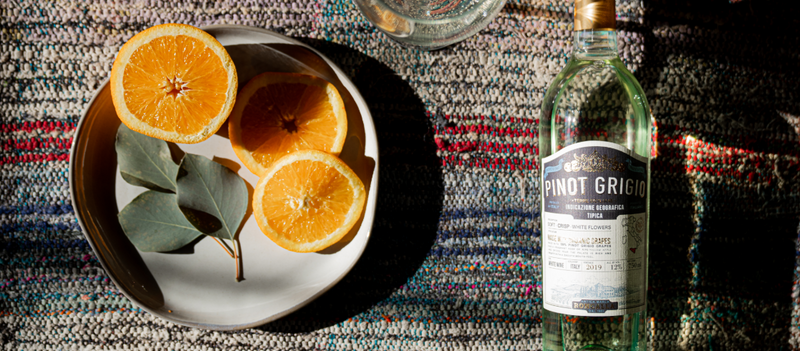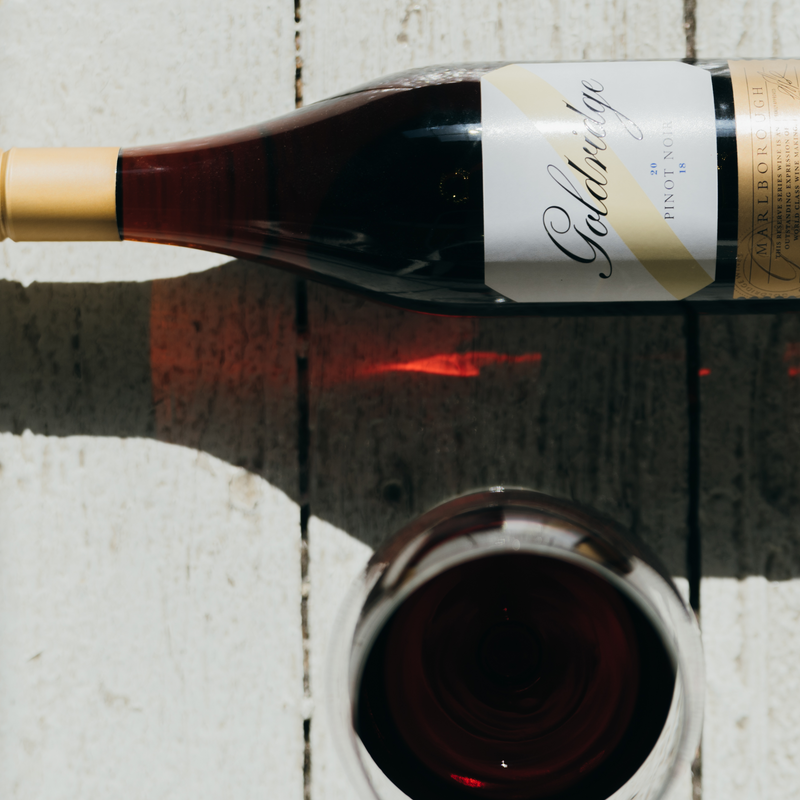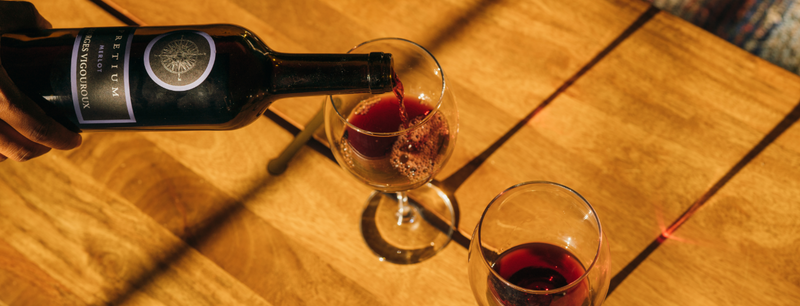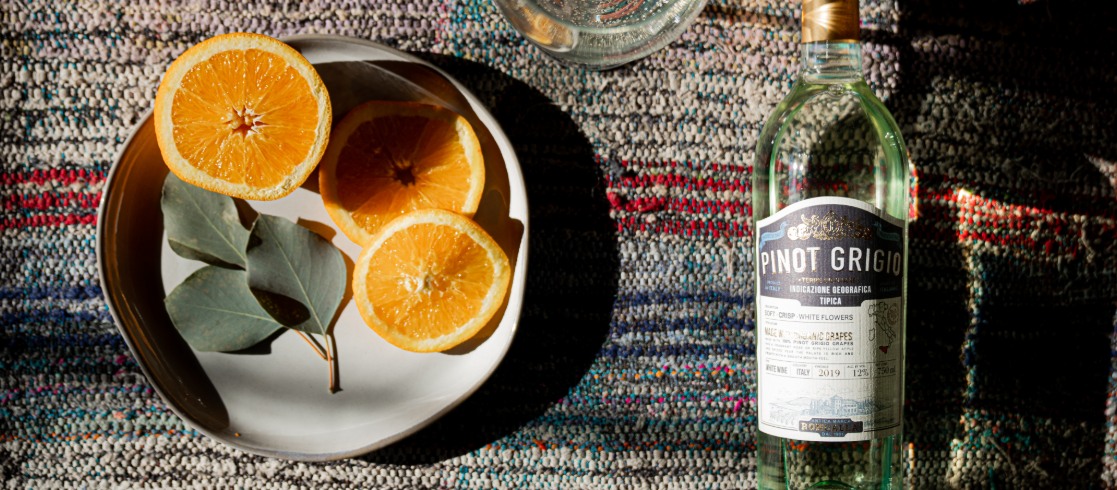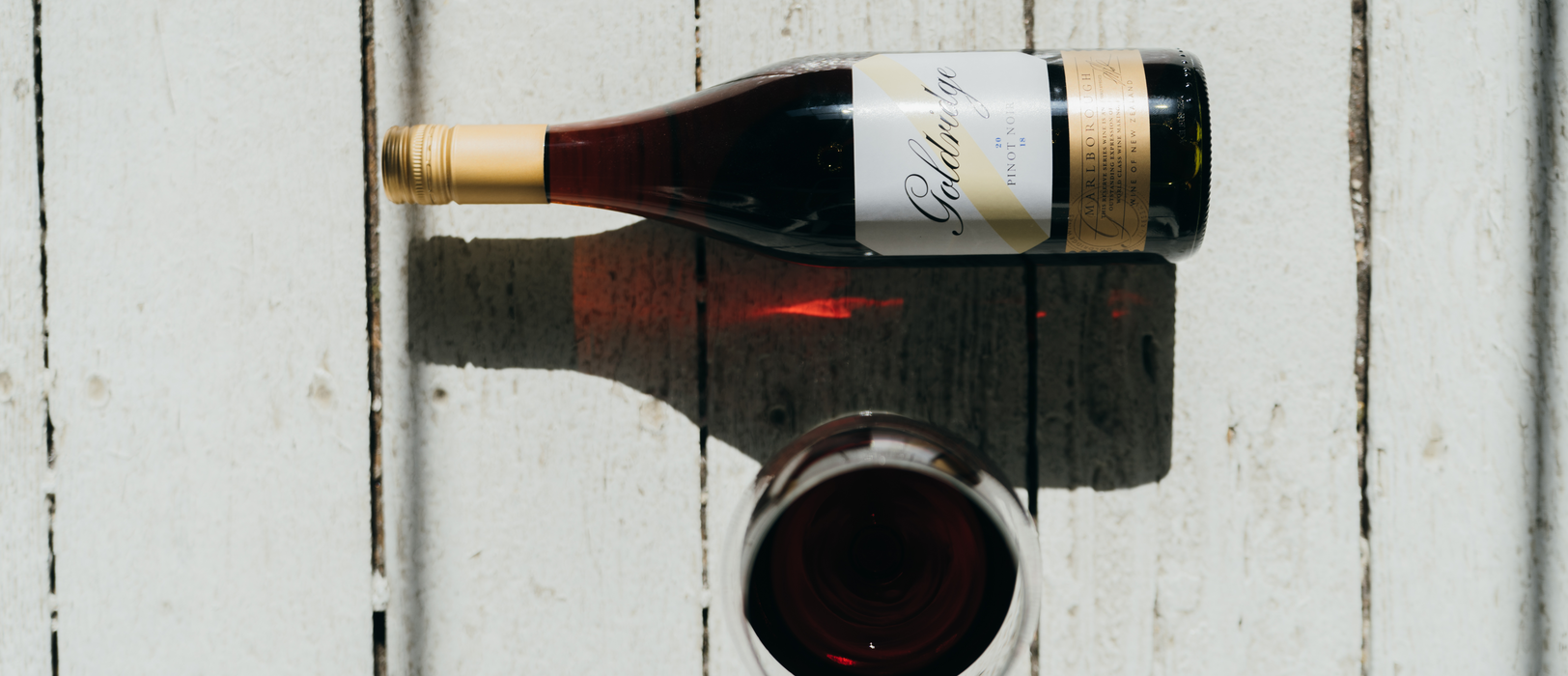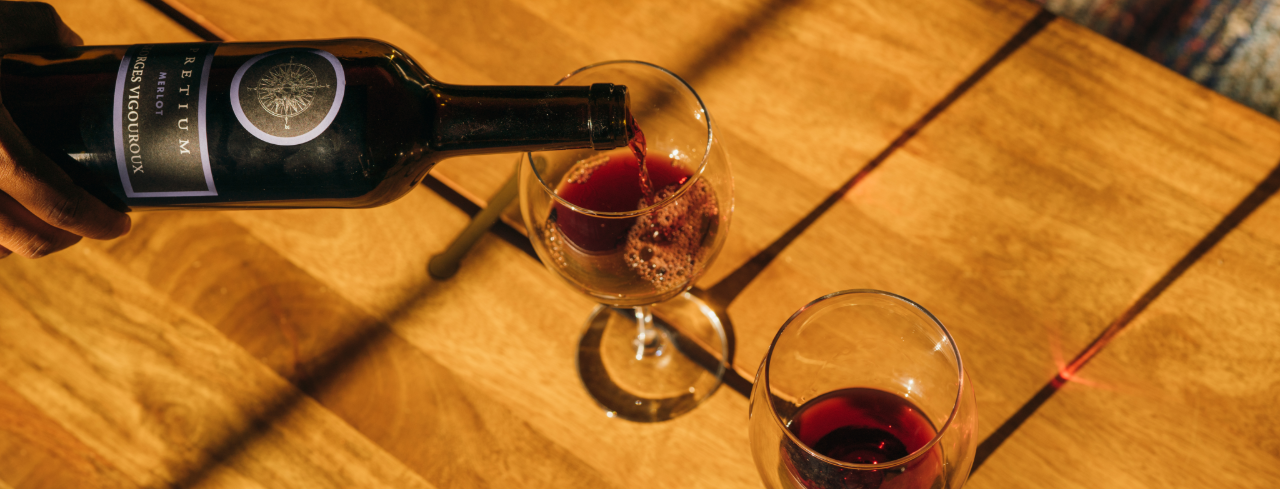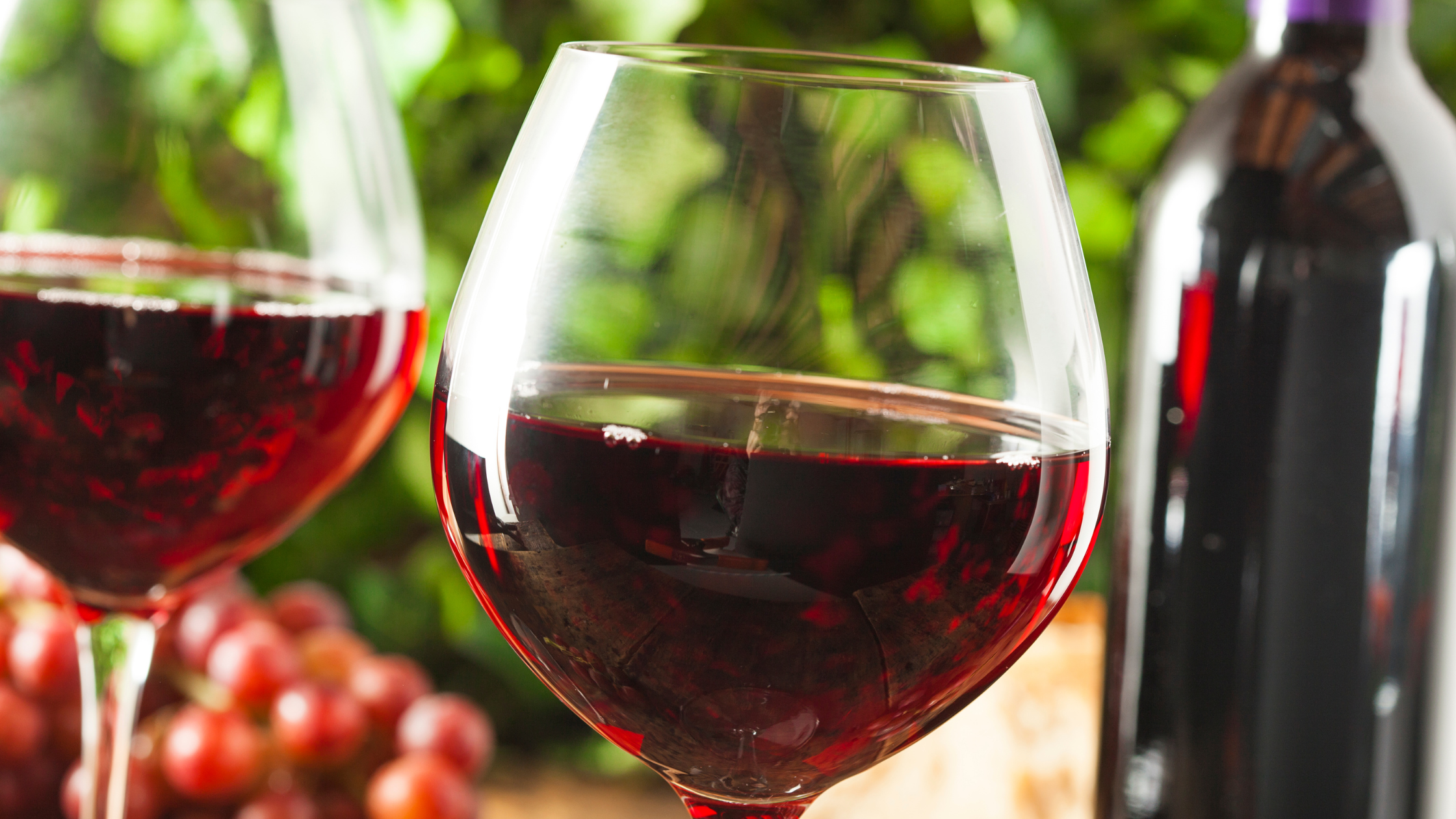
Is Merlot Sweet or Dry?
One of the most popular red wines in the United States, Merlot is a chameleon when it comes to its flavor profile.
Many wine enthusiasts question whether Merlot is a dry or sweet wine due to its deep, red fruit taste. This structured red wine is complex, with many aspects impacting its flavors, including alcohol content, the climate in which the grapes are grown, and more.
Let’s explore whether this fruit-forward variety is a dry or sweet wine.
What is Merlot?
First discovered in the French wine region of Bordeaux in the late 1700s, “Merlot” translates to “blackbird,” which is likely a reference to the birds that would eat the grapes from the vine.
Off the cuff, Merlot is a medium to full-bodied red wine of moderate acidity, bursting with black fruit notes. Because of its smooth tannins (the compounds that create the puckering texture you typically find in red wine) Merlot is pleasant on the palate. This wine has higher alcohol levels, usually around 13% or slightly more per volume.
Merlot grapes are thick-skinned, which gives the wine its deep pigment and bold flavors.
Keep reading for more on Merlot's wine-tasting notes below!
What Does Merlot Taste Like?
Merlot provides an assortment of delicious flavors.
On the nose, you’ll likely sense aromas of black cherries, blackberries, raspberries, and plums. You may also get a waft of subtle herbs and spices. You will taste these same black fruit and berry flavors on the palate with chocolate undertones and a dry finish. Even with all of these delightfully sweet fruit flavors, Merlot is, in fact, dry due to its low residual sugar content.
To further break down the aromas and flavor profiles of the evenly balanced Merlot, we must look at where the grape variety is grown and how it's aged.

Oak Aged vs. Steel Aged Merlot
Experienced wine drinks will know that how Merlot (like most wines) is aged significantly impacts the structure and flavor profile.
When aged in oak barrels, Merlot will have firmer tannins and emit oak, tobacco, and vanilla notes. Steel-aged Merlot is lighter and fruitier, taking on a fresh, clean taste and softer tannins.
Let’s take a look at how these characteristics compare to both warm climate and cool climate Merlot.
Warm Climate vs. Cool Climate Merlot
Just like with aging, where the Merlot grape is grown will impact its structure and flavor profile.
For instance, Merlot produced in a cooler climate like Bordeaux will taste savory and have a more complex structure and firmer tannins. It will have a puckering effect on the palate due to its heavier tannins. The alcohol content will also be slightly lower. These characteristics make it easy to confuse Merlot grown in cooler climates with Cabernet Sauvignon.
Overall, cool climate Merlot is richer, darker, and will take on smoky tobacco notes. On the other side of the globe, Merlot grown in a warmer climate like California’s famous Napa Valley will have more intense alcohol levels. However, the wine here will also taste lighter and fruitier. When wine tasting in Napa, you can really taste the fruit in a good merlot.
We’ve mentioned Cabernet Sauvignon, but how does Merlot compare to other famous red wines?
Merlot Compared to Other Red Wines
Before committing to a bottle of Merlot, you might want to do a bit of compare and contrast to see which red wine is perfect for you. Fellow wine drinkers, we totally understand. That’s why we’ve done the legwork for you.
Cabernet Sauvignon
Sipping Merlot and Cabernet Sauvignon back to back, you’ll notice the Cabernet is much sharper on the palate. Due to its higher levels of acidity and bolder tannins, Cabernet Sauvignon is a bit more intense. Merlot is much smoother and softer on the palate but doesn’t lack fruit-forward flavors.
Pinot Noir
Because Pinot Noir has the thinnest skins of any other red grape varietal, it is lighter and silkier on the palate. Merlot has thicker grape skins, which makes it a much heavier, bolder wine with a robust, full-bodied structure. You’ll find deliciously ripe notes of raspberries, cherries, and even mushroom in a classic glass of Pinot Noir.
Sangiovese
In terms of flavor, Sangiovese is the opposite of Merlot. You’ll find strong savory notes with herbaceous qualities instead of Merlot’s fruiter, juicier flavors.
Syrah
If Merlot is delicate, Syrah is intense. While both wines have bold fruit notes, Syrah has an extra spicy element and savory notes of black pepper. The fruit flavors are much more rounded with Merlot, making it an easy sipper.
Zinfandel
While Merlot and Zinfandel are both dry red wines with similar alcohol levels, tannins, and acidity, you might taste a slight licorice flavor (star anise) and black pepper in Zinfandel. Red Zinfandel also takes on a garnet hue, whereas Merlot is Ruby colored with purple undertones.
Malbec
The main difference between Merlot and Malbec is the tannin levels. Malbec is a full-bodied wine with concentrated tannins, giving it a smoky and dense texture on the palate.
If you’re up for the intensity, shop our selection of Argentinan Malbecs. They have a delightful kick of intense, jam-like textures and flavors bursting with dark fruit notes like pomegranate, plum, and blueberry. If you’re looking for something smoother and calmer for easy sipping, we still recommend Merlot!
Merlot Wine vs. Dessert Wines
Because Merlot has virtually no residual sugars left behind after fermentation, the only thing it has in common with most dessert wines is its fruity flavor profile. It is not a fortified wine, so it naturally won’t contain nearly as much sugar as a dessert wine like Port.
Merlot is so low in sugar; it has less than one gram per glass. But if we’re talking calories, Merlot isn’t lacking in those either due to its higher alcohol content.
Now that we’ve addressed the ins and outs of Merlot’s flavors, aging styles, grape varietals, and comparative red wines, let’s look at the best food pairings for Merlot.
Merlot Food Pairings
Merlot will taste decadent with most hearty meat dishes, especially if the type is rich and complex. The wine’s smoother tannins, rich fruit flavors, and dry taste allow it to stand against most savory comfort foods and classic Italian dishes like pizza and pasta.
Lighter Merlot is well-suited for salmon, white chicken meat, and light pasta. Darker Merlot is a beautiful complement to lamb, mushroom burgers, herb-roasted steak dishes, and game meats. Bring out Merlot’s tart fruit notes with tomato sauces and even rhubarb pie.
If you're craving something truly rich, pair your Merlot with dark chocolate lava cake.
Is Merlot Wine Sweet or Dry?
Now that we know more about Merlot and its characteristics, you’re prepared to answer the question, “Is Merlot dry or sweet?”
Overall, Merlot is a dry wine. However, its burst of dark fruit and berry notes can confuse the palate, as its juicy flavors lack a sweet finish.
This red wine is smooth on the palate, making it an easy sipper on its own or with decadent dishes like hearty pasta and lava cake. Due to its versatility and range of flavors, it’s no mystery why Merlot is a tried and true famous red wine.
Shop our red wine selection and find your next favorite Merlot, and read our Wine Insiders Blog to further satisfy your wine cravings!
